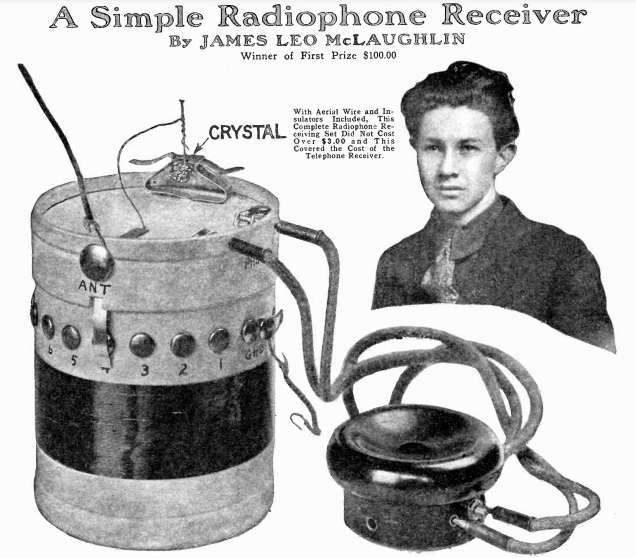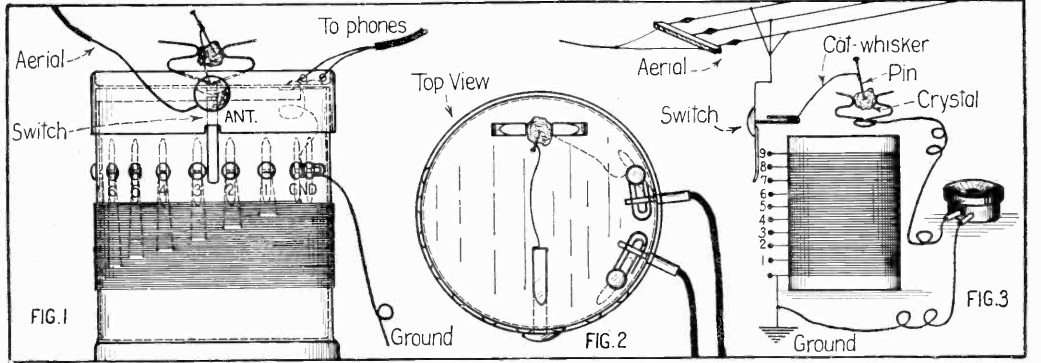 A hundred years ago this month, this receiver was the winner of first prize in a contest run by Science and Invention magazine, and appeared in the April 1922 issue. The set was said to be adequate for pulling in stations 15-20 miles away. The only tools required to construct it were a knife and small nail, it could be built in about 30 minutes, and the cost was only $30, including headphone and antenna. The phone receiver was the most expensive component at about $2, and the cost of the set itself was only 21-1/2 cents.
A hundred years ago this month, this receiver was the winner of first prize in a contest run by Science and Invention magazine, and appeared in the April 1922 issue. The set was said to be adequate for pulling in stations 15-20 miles away. The only tools required to construct it were a knife and small nail, it could be built in about 30 minutes, and the cost was only $30, including headphone and antenna. The phone receiver was the most expensive component at about $2, and the cost of the set itself was only 21-1/2 cents.
With a 25 foot antenna in New York, the set was said to pull in stations WDY and WJZ. In fact, the author reported that on several occasions, the phone could be held about six inches from the ear with music and voices clearly distinguishable.
The author, and winner of the $100 first prize was James Leo McLaughlin. You can see some more of his receivers at this link.
All of the parts are readily available, if you don’t have them around the house already. The chassis is a 4-inch diameter cardboard container. You can probably ask a friendly restaurant to give you one of their takeout containers, or you can use the time-honored crystal set chassis, namely, an oatmeal container. The terminals are brass paper fasteners and paper clips. You’ll need some 26 gauge enamel wire for the coil, and wire of any size for the antenna. In lieu of the headphone, it’s easiest to use a high-impedance crystal earphone.
Finally, the article calls for a piece of silicon or galena for the detector. The gift shops of most science museums have an assortment of minerals for sale, galena being one of them. Or, like everything else, you can order it from Amazon.
Some links on this site are affiliate links, meaning this site earns a small commission if you make a purchase after clicking the link.


